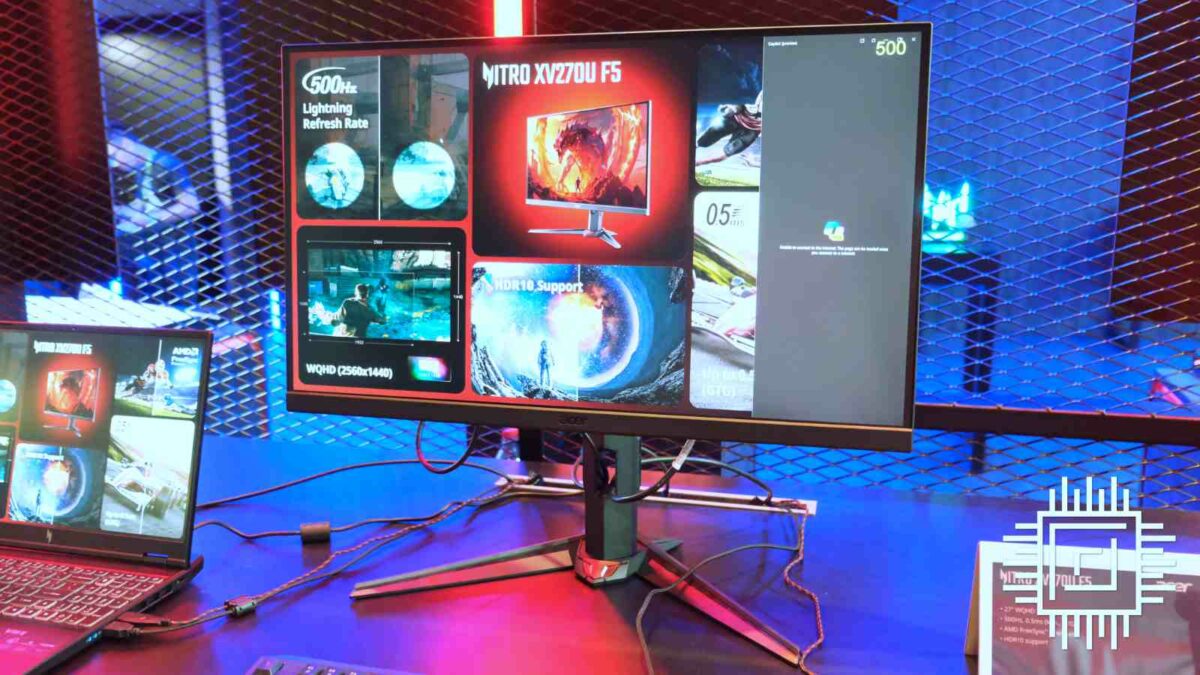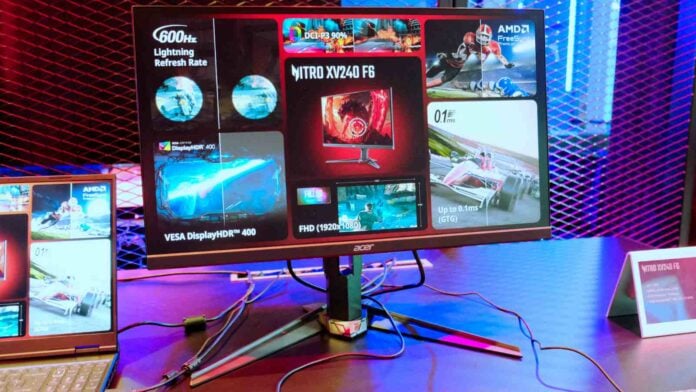We’ve come a long way from the days when 60Hz was the gold standard. Acer now has a gaming monitor that’s capable of ten times the refresh rate, blazing past all the competition with a native 600Hz. Of course, this doesn’t come without some concessions, but none that’d dissuade the most competitive esports players out there.
As always, setting a new bar means smaller screens in both size and resolution. Acer Nitro XV240 F6 is a 24in monitor that sticks with trusty old full HD. FreeSync Premium keeps the blazing-fast refresh rate from tearing, while a 0.1ms grey-to-grey response time keeps pace with OLED. VESA DisplayHDR 400 certification guarantees enhanced blacks, while 90% DCI-P3 gamut coverage should offer decent colour.
Unsurprisingly, it’s a TN panel that leads the way, as it offers more headroom for refresh rate at a cheaper production cost. This means colours won’t be as punchy as IPS, and contrast will be lacking compared to VA. Generally, I find it tough to justify a TN panel in 2024, no matter how much this one will cost when it finally comes to market. That said, esports players worldwide still rely on them, considering the extra fluff distracting. I’ll let you be the judge.

Eventually, such speeds will make their way to other panel types. Acer Nitro XV270U F5 joins its smaller brother as a 27in gaming monitor touting 500Hz on a 1440p screen. Response times are a little higher at 0.5ms, but nothing you’d notice in day-to-day use. It’s a worthy trade-off for the spec uplift and HDR10 support.
It’s easy to think such high refresh rates are a waste, but there is a method to the madness. While there are definite diminishing returns the higher you go, the value comes from how 600Hz will interact with low-latency features like Nvidia Reflex. Seeing an extra few pixels of an enemy before they disappear around the corner gives you more opportunity to react. It can’t make you good at a game, but it can give you an advantage.
The million-dollar question is simply how much you’ll need to pay for the privilege, which we don’t know yet. Frankly, I’m more inclined to wait for the higher-resolution models on better panels, but all in good time.


